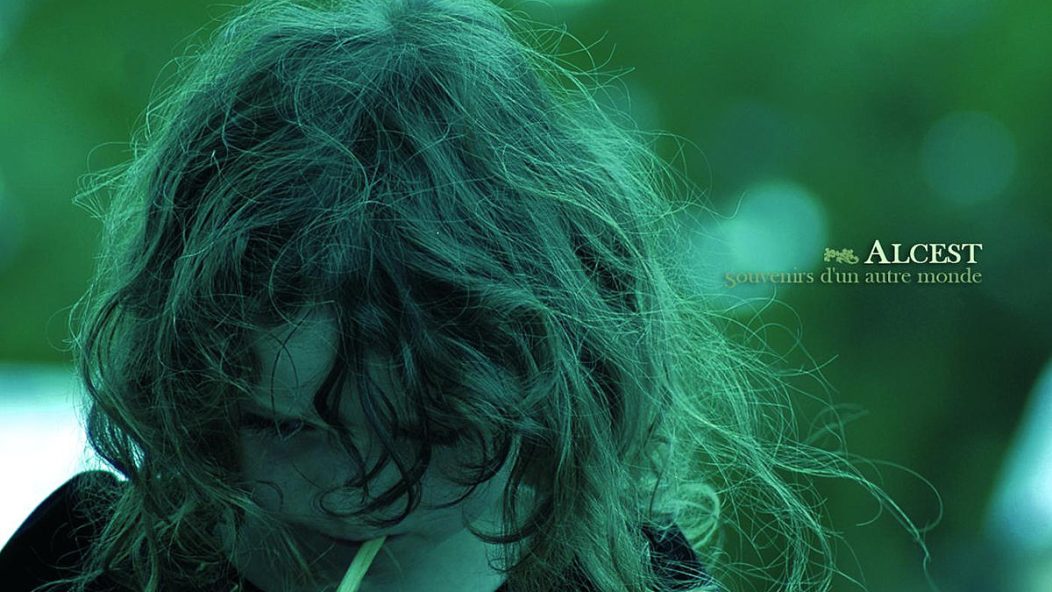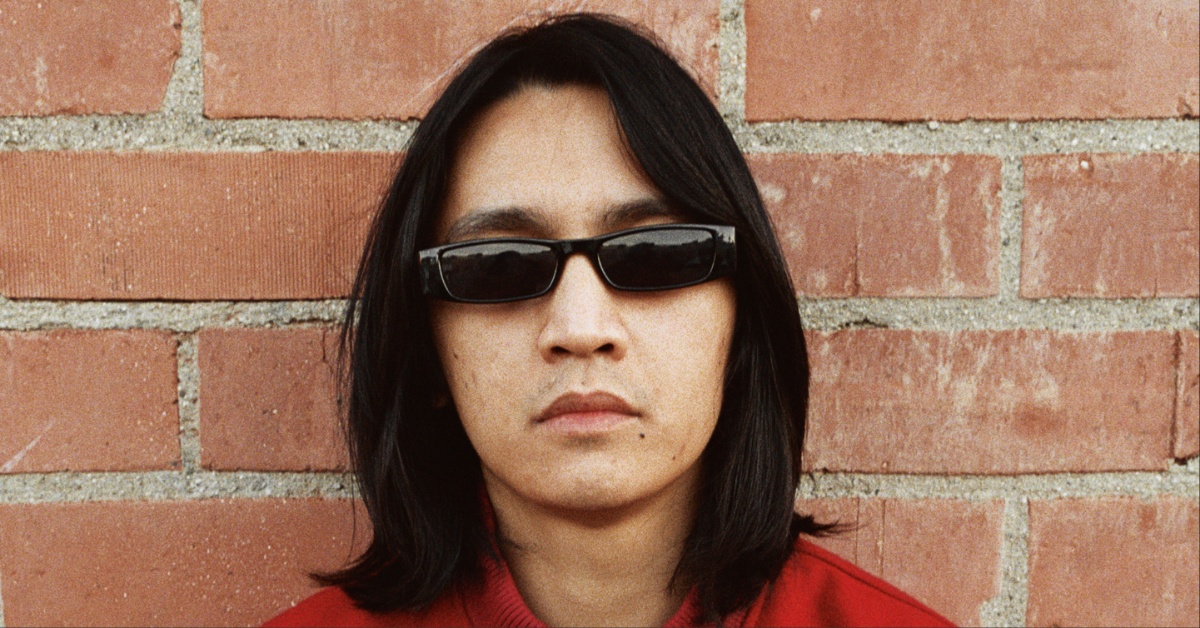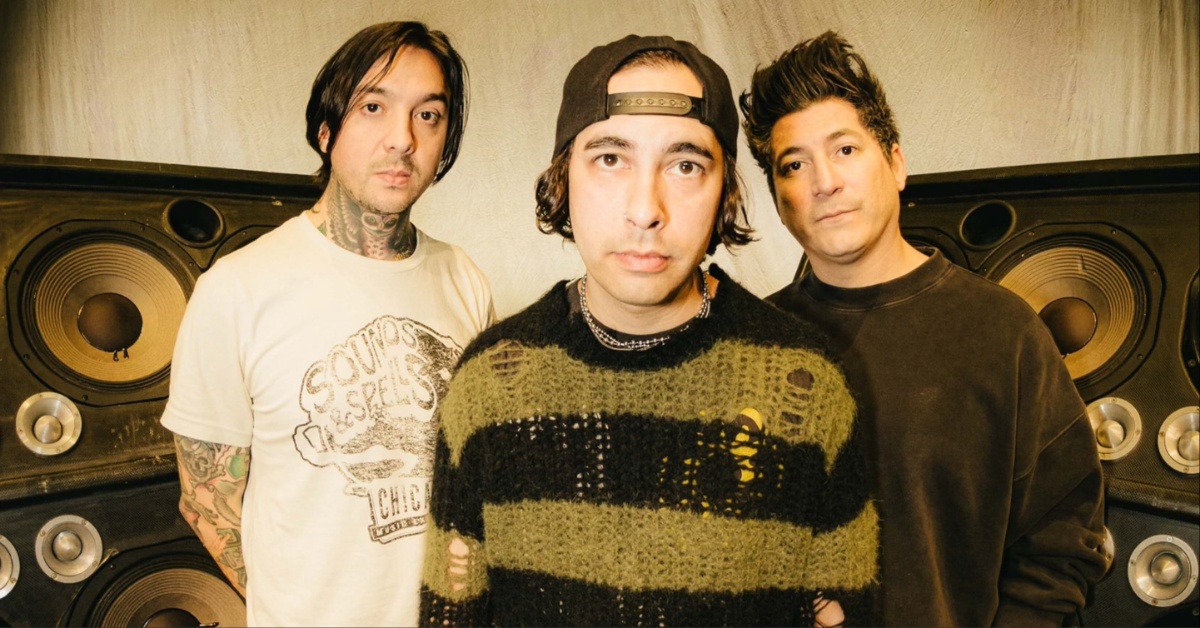
Emerald Spring: Alcest's "Souvenirs d'un Autre Monde" Turns 10

…
Depending on how one feels about “blackgaze” or “post-black metal,” Stéphane Paut (better known as Alcest mastermind Neige), is either a visionary or “black metal’s Typhoid Mary.” Given the genre’s rigid boundaries and sometimes snide attitude toward experimentation, many of the old guard rankle at calling Alcest’s music black metal at all. However, few would dispute the pervasive influence of their first full length Souvenirs d’un Autre Monde on the genre’s last decade. Souvenirs will turn ten on August 3rd [Editor’s Note: Prophecy Productions released the album digitally one month earlier, but this follows the actual physical release date.]. As it begins its transition from childhood to its awkward tween years, we offer this retrospective.
The year 2007 saw black metal heavyweights like Mayhem (Ordo Ad Chao), Dimmu Borgir (In Sorte Diaboli), Watain (Sworn to the Dark), and Marduk (Rom 5:12) all release new albums. It was also the year of Wolves in the Throne Room’s sophomore effort Two Hunters and the first EPs from Fen and Altar of Plagues (Ancient Sorrow and Through the Cracks of the Earth respectively). Little wonder then that Souvenirs, while generally well-received by critics and met with excitement from some listeners, inspired bewilderment from many others. Slowly, somewhere around the release of their second album, that confusion evolved into outright scorn from more conservative black metal fans, only open to a limited spectrum of experimentation, as the genre gained in both popularity and influence.
…
…
In some ways, its musical style came out of nowhere. Neige’s pre-Souvenirs recordings with second wave-leaning Peste Noire offer no real antecedent for the album’s direction. His songwriting contributions to Mortifera’s Vastiia Tenebrd Mortifera, though, show him starting to trend that way. Amesoeurs’s debut EP Ruines Humaines, released roughly ten months before Souvenirs, feels the closest to where he was heading, but it still has a darker feel due to its heavy post-punk vibe.
Neige formed Alcest as a solo project back in 2000, eventually recruiting Peste Noire bandmates Argoth and Famine (credited as “Agenore”) to record the traditional-sounding Tristesse Hivernale demo the following year. Following the 2005 demise of Mortifera, which has since been resurrected by Noktu without Neige, he returned to the project and recorded Le Secret EP completely on his own. A gilded-sounding effort which, despite its shining nature, retained some of black metal’s darker qualities, Neige abruptly moved Alcest’s sound in a vibrant, melodic direction, sharp in contrast to the genre’s more typical, monochromatic palette. On the EP’s two lengthy tracks, tremolo-picked riffs, harsh vocals, and blast beats sit alongside dreamier passages with fragile, clean vocals that foreshadow the form Souvenirs d’un autre monde would ultimately take. Neige also connected Alcest’s music to memories from his childhood for the first time on the EP. In a 2006 interview with ATMF Webzine, quoted by Pitchfork’s Grayson Currin in his review of Alcest’s 2011 re-recording of Le Secret, Neige said:
Since my childhood, I’ve had the impression of being in contact with a luminous, far-off country. I have named it trivially ‘Fairy Land,'” […] My goal with Alcest is to transpose in musique my memories of this Fairy Land… beyond all terrestrial and real beauty.
If Le Secret merely nodded towards that “Fairy Land” of Neige’s youth, Souvenirs saw him fully embrace its influence. Although not afforded the same degree of hype as its follow-up Écailles de lune three years later, Souvenirs d’un autre monde (“Memories from Another World”) marks the point where Alcest began creating waves throughout the wider black metal community. As with Le Secret, Neige recorded Souvenirs as a solo record, save for an assist from his Amesoeurs co-vocalist Audrey Sylvain on “Sur l’autre rive je t’attendrai.”
However, that’s where the similarities between the two recordings end. Neige attempted to convey those childhood experiences via music; virtually everything about the radiant, gossamer Souvenirs feels self-consciously different. It starts with the pastoral cover image of a tousle-haired child chewing on a piece of straw, backed by a verdant tapestry of leaves. It looks like something from a classic children’s novel like The Secret Garden, providing the perfect visual compliment to the music’s sense of wonder and beauty.
…

…
Contemporary reviews of Souvenirs often remarked that the album evokes feelings of nostalgia, while also acknowledging Alcest’s then-unique approach to the genre. Really only nominally a black metal record, it left many listeners disoriented and actively looking for ways to make it fit into a familiar category. Many pointed to the occasional blasts of tremolo picked guitar as evidence of the album’s black metal bonafides, but post-rock bands like Explosions in the Sky and Godspeed You! Black Emperor also make prominent use of the technique. Some grasped at Neige’s prominent use of acoustic guitars and folk melodies, which have been an accepted part of the genre since at least as far back as Satyricon’s pre-Dark Medieval Times recordings and, more notably, Ulver’s 1994 debut studio album Bergtatt – Et eeventyr i 5 capitler, as a way of justifying calling the album black metal. Once again, though, using acoustic instruments to add dynamics and texture spans virtually all genres of music, hardly qualifying it as a trope exclusive to black metal. As Neige told Andrew Bansal of Guitar World in 2012, however, he never actually considered Alcest a black metal band. He explained:
For me, Alcest never was black metal. Our first demo was black metal, but from that point on, I don’t think our music has been black metal, because [it] has some blast beats and some screams, the atmosphere is so different. It’s almost the opposite of black metal for me. It’s very uplifting, very dreamy, very fragile. I just took some elements from black metal, but I did that with an aim of making something different out of it. So I don’t think we can say there is black metal in Alcest. That’s why many people don’t understand this music, because they listen to it in comparison to black metal.
Many critics saw a shoegaze influence on the music, but Neige has stated repeatedly in interviews that he was completely unfamiliar with the genre until after reviewers started drawing those comparisons. To be fair, his airy, vulnerable clean vocals do share similarities with the likes of My Bloody Valentine, Lush, and even Cocteau Twins. However, the music completely lacks shoegaze’s trademark effects-laden wooziness and narcoleptic haze. Thus, simply calling the album a hybrid of shoegaze and black metal feels totally reductive, a case of people hearing what they want to hear instead of what Neige actually intended. Yet, at this point, so many writers have perpetuated the shoegaze influence narrative that it’s become an accepted part of the album’s identity, despite those musical elements only being there by coincidence. As he explained in a 2007 interview with former Pitchfork editor Brandon Stosuy:
I am not a big fan of “shoegaze” metal. I just like Slowdive and My Bloody Valentine that a friend of mine recently advised me to listen to — great bands, really. Some people wrote I copied these bands. It’s crazy because I did not know them when I composed my album. I have been using ethereal clean vocals since Le Secret in order to reproduce the fairy-like chants I perceived in my visions of Alcest’s realm, certainly not because I wanted to sound like “shoegaze,” “post-rock,” or anything else
.
Of course, Alcest did go on to make a shoegaze-esque album with 2014’s Shelter. Drawing upon former reviewer comparisons, Neige even enlisted the help of Slowdive’s Neil Halstead on the record. The relatively tepid response from fans and critics, though, motivated him to return to his “not black metal” sound for their most recent album, Kodama.
Since Souvenirs d’un autre monde feels so fully realized as as album, it’s possible Neige was being at least slightly coy or engaging in some revisionist history in his replies. Taking him at his word, though, it seems the album’s style evolved organically without much outside context, arising more from an ambivalence towards genre and perhaps even some serendipity (the creative person’s best friend). When asked about Alcest’s sound in an interview with former Invisible Oranges Editor-in-Chief Joseph Schafer in 2011, he replied:
I don’t care about the sound. My only goal is to portray this other world that I speak about in my lyrics. I don’t care whether or not I use distortion or blast beats. I am not conscious about my own sound; I just try as best I can to portray these visions.
On Souvenirs, those portrayals take the form of bright tones and resplendent melodies. Neige’s guitar work on opening track “Printemps émeraude” (“Emerald Spring”) shimmers with wide-eyed joyfulness as he sings (in French) of how “Tree leaves dance / With the light breeze / And the rays of the sun / So that its light / Turns them into jewels,” accompanied by the happy sounds of children at play. That same ebullience infuses “Ciel errant” (“Wandering Sky”), which takes its cues from the jangling guitars of early nineties college rock. Even in its darker moments like “Sur l’autre rive je t’attendrai” (“On the Other Side I Wait”), the minor key chord progressions lend a melancholic air to the speaker’s promise to, “Wait / For years / With the hope of seeing one day / Your eternal child’s face.” The album ends with the Celtic-inspired “Tir nan Og” (“Land of the Young”), where a playful arrangement dominated by acoustic guitars, hand-played percussion, and a lilting piano line offset wistful lyrics about the pain of leaving one’s childhood behind.
Regardless of his intentions or sources of inspiration, the album created a template for the rest of Alcest’s discography (the metal-free detour of Shelter notwithstanding). For good or ill, it’s also served as a jumping-off point for countless other bands playing similar hybrid black metal styles which formed in its wake, saddling it with the kind of baggage that can make approaching the album objectively difficult. So, in lieu of the traditional tenth anniversary presents of tin or aluminum, why not give Souvenirs d’un Autre Monde the gift of an open-minded listen? You just might end up succumbing to its many charms, as well, in the end.
…
Follow Alcest on Facebook and Bandcamp.
…











